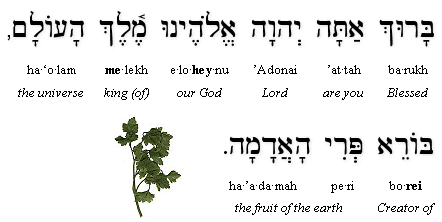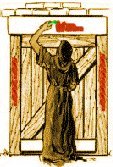|
Various explanations for the karpas ritual have been given, including the idea that is a means to make the children at the Seder more curious, or that it is a luxury of the free person to eat an appetizer before a fancy meal. The vegetable symbolizes the lowly origins of the Jewish people; the salt water symbolizes the tears shed as a result of our slavery. Parsley is often used for this purpose because when you shake off the salt water, it resembles tears.
The seder leader calls out, "Karpas!" and then everyone present will recite the following blessing before dipping their vegetable in salt water and eating:
|




